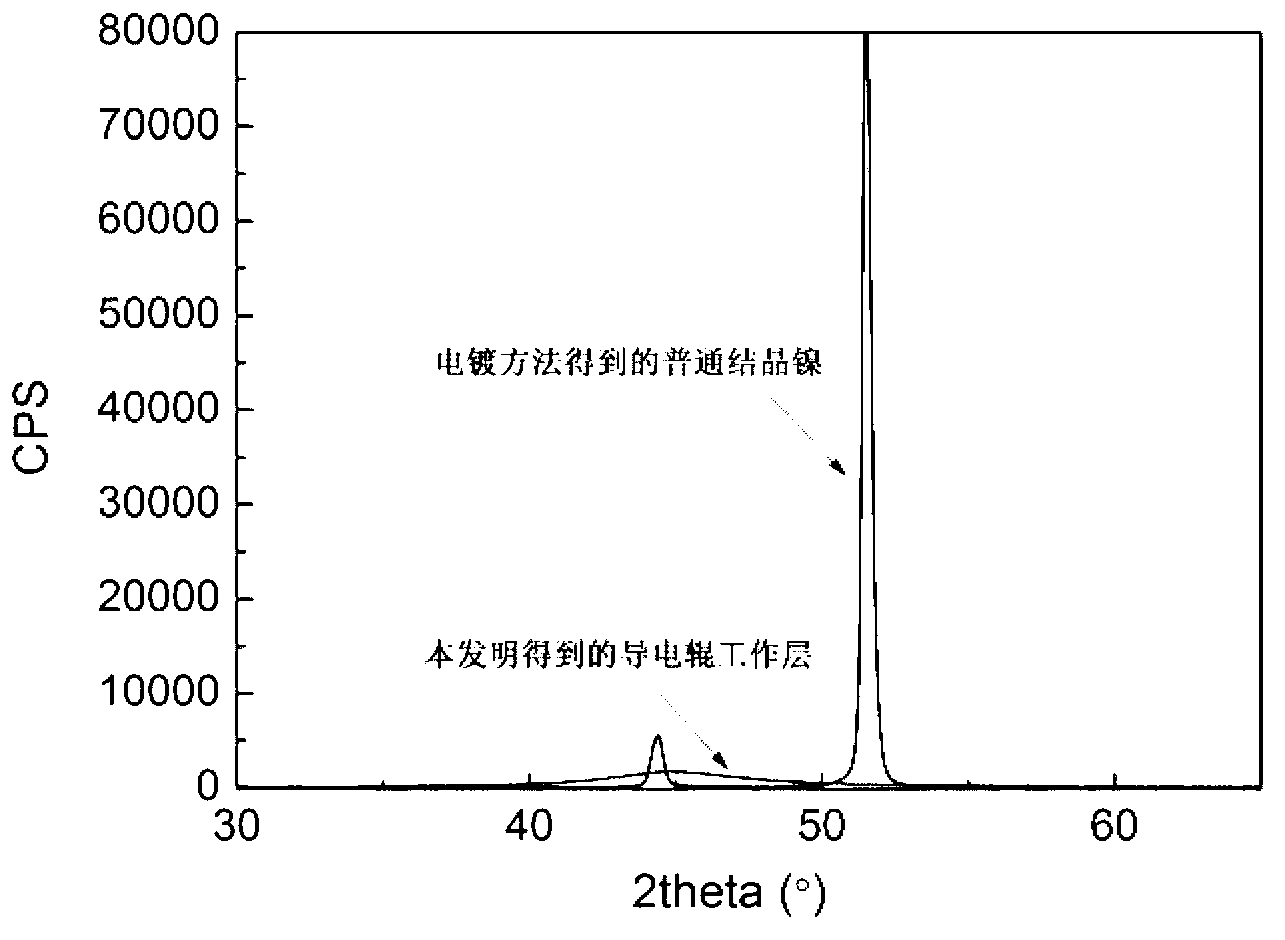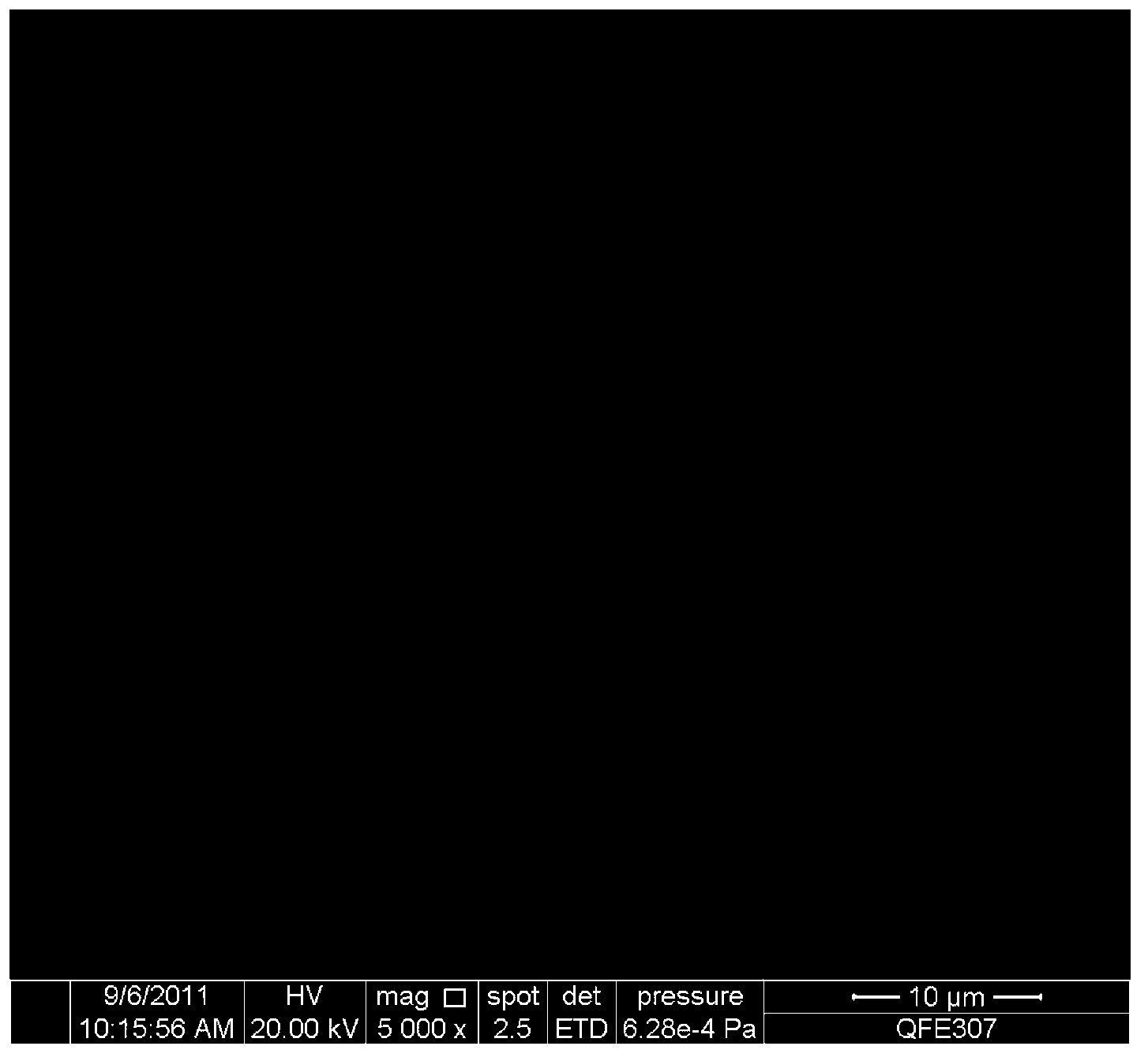Method for preparing the working layer of a conductive roller
A technology of conductive roller and working layer, applied in the field of preparation of conductive roller working layer, can solve the problems of poor corrosion resistance and mechanical properties, high chrome plating layer, micro-cracks in chrome plating layer, etc., and achieves excellent corrosion resistance and mechanical properties, good Corrosion resistance, mechanical properties and uniform structure
- Summary
- Abstract
- Description
- Claims
- Application Information
AI Technical Summary
Problems solved by technology
Method used
Image
Examples
Embodiment 1
[0038] This embodiment includes the following steps:
[0039] Step 1, cleaning and degreasing to remove the grease on the surface of the conductive roller base.
[0040] Preferably, in step 1, an alkaline formula is used for degreasing, the content of sodium hydroxide in the alkaline degreasing solution is 15-30 g / L, the content of sodium carbonate is 20-40 g / L, and the content of trisodium phosphate is 20-40 g / L L, the degreasing temperature is 50~70°C, and the degreasing time is 5~10 minutes.
[0041] Step 2, washing with flowing water to remove the degreasing solution remaining on the surface of the conductive roller substrate.
[0042]Step 3, activation, removing the passivation film on the surface of the conductive roller substrate; the concentration of hydrochloric acid in the solution used for activation is 10-20%, the temperature of the activation solution is normal temperature, and the activation time is 1-2 minutes. The purpose of this step is, because the passivat...
Embodiment 2
[0063] Embodiment 2 is a modification example of Embodiment 1.
[0064] This embodiment is based on embodiment 1, specifically,
[0065] The nickel-phosphorus amorphous alloy electroplating solution is arranged in the electroplating solution storage tank, the total capacity is 3L, and the concentration of each component in the electroplating solution is: nickel sulfate 240g / L, nickel chloride 45g / L, phosphoric acid 30g / L, boric acid 20g / L, sodium lauryl sulfate 10mL / L, and 1400mL dilute hydrochloric acid (concentration 37%) was added to the electroplating solution to adjust the pH value of the plating solution to 2.0. The electroplating solution storage tank is connected to the horizontal electroplating tank, the electroplating solution is continuously filtered, and at the same time, the electroplating solution is heated and the temperature of the electroplating solution is controlled at 75±1°C. The length of a roll surface is 1800mm, the diameter of the roll body is 350mm, ...
Embodiment 3
[0067] Embodiment 3 is a modification example of Embodiment 1.
[0068] This embodiment is based on embodiment 1, specifically,
[0069] The nickel-phosphorus amorphous alloy electroplating solution is arranged in the electroplating solution storage tank, the total capacity is 3L, and the concentration of each component in the electroplating solution is: nickel sulfate 240g / L, nickel chloride 45g / L, phosphoric acid 30g / L, boric acid 20g / L, sodium lauryl sulfate 5mL / L, and add 800mL dilute hydrochloric acid (concentration 37%) to the plating solution to adjust the pH value of the plating solution to 2.5. The electroplating solution storage tank is connected to the horizontal electroplating tank, the electroplating solution is continuously filtered, and at the same time, the electroplating solution is heated and the temperature of the electroplating solution is controlled at 73±1°C. Carry out cleaning and degreasing treatment to a conduction roll substrate with a roll surface ...
PUM
| Property | Measurement | Unit |
|---|---|---|
| Thickness | aaaaa | aaaaa |
Abstract
Description
Claims
Application Information
 Login to view more
Login to view more - R&D Engineer
- R&D Manager
- IP Professional
- Industry Leading Data Capabilities
- Powerful AI technology
- Patent DNA Extraction
Browse by: Latest US Patents, China's latest patents, Technical Efficacy Thesaurus, Application Domain, Technology Topic.
© 2024 PatSnap. All rights reserved.Legal|Privacy policy|Modern Slavery Act Transparency Statement|Sitemap


